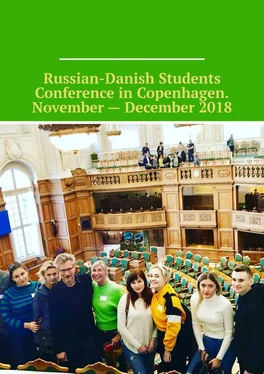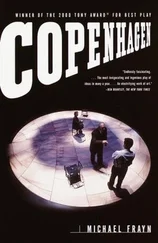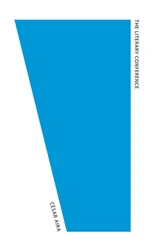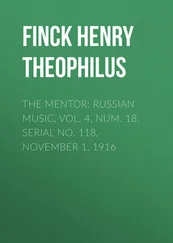Danish miracle
From January 1, 1999, the Danish krone is tightly tied to the euro at a ratio of 7.46038: 1 and free to move in a narrow corridor (no more than 1%). Such a pegging requires the Danish government to constantly have free reserves in euros in order to keep the national currency rate in a given corridor if necessary. In such circumstances, the decision of Denmark to refuse to lend in foreign currency looks pretty risky.
So, according to the McKinsey Global Institute, the sovereign debt of 47 countries leading in terms of already existing debt increased from 142 trillion dollars in 2007 to 199 trillion in 2014 (40% in 7 years!). Over the same period, total global debt increased from 269% of total GDP to 286%.
Such a dynamic cannot but cause concern, since it is commonly believed that during these very years there was a “deleveraging” in the world economy – a massive decrease in borrowed funds.
What is striking, however, is not so much the deliverance of Denmark from uncontrolled foreign currency debt at a time when the whole world is moving in the opposite direction, but the social and economic consequences of this step within the Scandinavian country itself!
The fact is that a sharp reduction (especially complete liquidation!) Of external sovereign debt dependence was almost always accompanied in history by a catastrophe both for the national economy and for the quality of life of citizens of the country who risked conducting this questionable experiment.
As an example, we can recall the socialist Romania of the 70—80s, who first collected debts, and then decided to return them all at the expense of the proceeds from the enterprises, and then burned them out.
The more striking is the background against which the Danish Kingdom liquidated its sovereign foreign currency debt:
– according to the World Happiness Report, published by the UN and taking into account such indicators as real income per capita, level of social protection and support, life expectancy, quality of medical care, freedom of life choices and corruption, citizens of Denmark share with their neighbors Norwegians first place in the ranking of the happiest inhabitants of the planet;
– The unemployment rate is two times lower than the average for Europe;
– The lowest social equality indicator in the world.
– The lowest level of corruption in the world;
– First place in the World Bank Ease of Doing Business rating (ease of doing business);
– The highest sovereign credit rating (in addition to Denmark, AAA has a rating of only 10 countries: Australia, Canada, Germany, Hong Kong, Liechtenstein, Holland, Norway, Singapore, Sweden, Switzerland).
Parade of models
In Denmark, a unique model of the structure of society and the economy is being implemented, which is different from the notorious LME (Liberal Market Economy) and from CME (Coordinated market economy). The academic name of this model is Negotiated Economy (NE, contractual economy), but another term is better known – the Nordic Model, the Scandinavian model.
Formally, the NE is considered a variety of CME, coordinated by an economic model, but it has a number of fundamental differences. In CME, the idea of corporatism is embodied by the state, which interferes in social and economic relations. In the NE, corporatism is decentralized. The agreements are implemented at the grassroots level: directly between entrepreneurs and workers (or rather, the trade unions representing them), as well as between other civic groups that have their own interests that deserve the attention of society. Everyone has the right to vote and the right to listen to this voice. The state is assigned the role of a mediator, a guarantor of a social contract that provides classical functions (legal proceedings, law enforcement, foreign policy etc.).
The Scandinavian model, as the name suggests, is implemented today in Denmark, Norway, Sweden, Finland, as well as in the Netherlands. This model has a common foundation due to the universal mentality of the Scandinavian peoples, as well as private specificity reflecting the historical evolution of each nation and country separately.
The Danish experience, in my opinion, is the most interesting, because only in Denmark the role of the state is reduced to such a minimum that it is time to doubt the model itself as a coordinated market economy.
FÅ HAR FOR MEGET OG FÆRRE FOR LIDT
The combination of a capitalist economy with the ideals of socialism is by no means Danish exclusive. The same values are shared by the rest of the peoples of Northern Europe, so it is logical to begin our analysis by considering the universal foundation on which any Scandinavian model is built today.
The negotiated economic model is characterized by the following set of principles:
– private property, free market and free trade;
– the welfare state (the so-called Welfare State);
– collective bargaining agreement;
– absolute autonomy of the individual;
– social mobility;
– free education and universal medicine;
– public pension funds;
– minimal market regulation; all-powerful trade unions;
– a very high level of social payments from the budget (Sweden – 56.6%, Denmark – 51.7%, Finland 38.6%); very high level of taxes (Sweden – 51.1%, Denmark – 46%, Finland – 43.3%); the enormous amount of unemployment benefits (Denmark – 90% of the latest wage, Norway – 87.6%, Finland – 85.1%, Sweden – 80%, for comparison, Germany – 60%, in some US states – 27%).
As we have already said, the Danish version of NE is characterized, first of all, by a marginal decrease in the state intervention in the regulation of labor and economic relations. If, say, in Norway, the main burden of providing social benefits lies with the state, in Denmark these functions are delegated to private business by voluntary consent of all parties.
As a result in Denmark a completely insignificant public sector – 30%! However at the same time – here it is a Hellenic measure in action! – Danish pension funds are the responsibility and responsibility of the state since the private form of ownership and control in this area is fraught with a conflict of interest.
Scandinavian countries are characterized by high liberalism in the spheres of public life, the forms of self-expression of personality, culture and art. However, Denmark not only advanced further than others, but always acted as a “trendsetter”: in 1989 it was the first to legislate the notion of marriage without gender. Even tensions in the relations of Western Europe with Islamic fundamentalism, and that arose after the cartoons of the Prophet Mohammed appeared in the Danish press.
Today you can incorporate your own business in Denmark in a couple of hours, and the almost complete absence of customs restrictions and duties on international trade allows the country to firmly hold, as we have already said, the leading place in the Ease of Doing Business rating.
Flexicurity
Flexicurity is a combination of Flexibility (Security, Elasticity) and Security (Well-Being, Security). Such “flexibility” allows Denmark to maintain a balance between a high degree of freedom in the labor market and guarantees of social security for workers.
The condition of “flexibility” (Flexibility) is realized through the right of the employer in the shortest possible time and without a long notice to dismiss any employee who isn’t good for that job. As a result, the Danish business, which is not bound hand and foot by labor obligations, demonstrates the unique ability to quickly restructure the staff, quickly join new projects and at least quickly roll out unpromising initiatives.
Читать дальше












